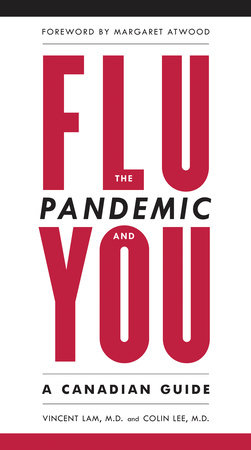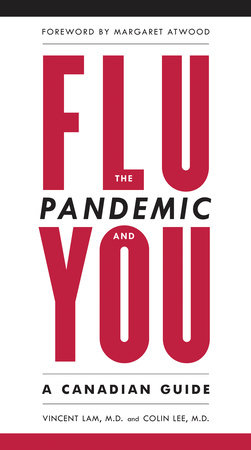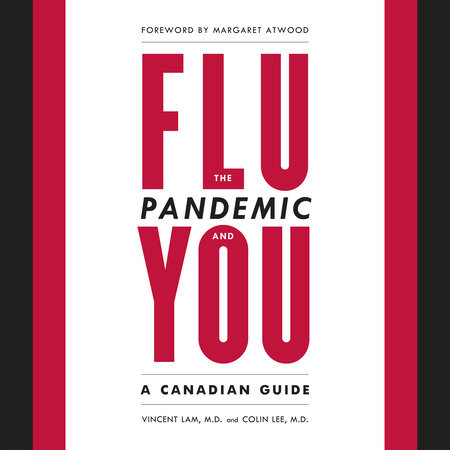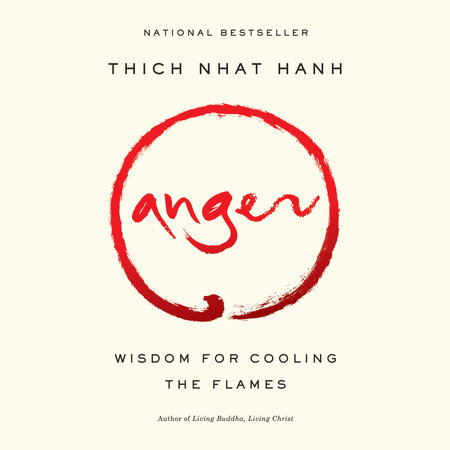Q&A with Vincent Lam, M.D. and Colin Lee, M.D.
Q – Is there anything that Canadians can do to protect themselves in the event of a Flu Pandemic?
A — Much of what Canadians can do to protect themselves should happen prior to a pandemic: Canadians should keep themselves healthy. They should exercise regularly, eat a sensible diet, and receive a ‘seasonal’ influenza vaccine each year. Smokers should quit smoking. The best way to survive a Flu Pandemic is to be healthy when it starts.
Canadians need to understand how influenza is transmitted from person to person. It can travel directly through a cough or sneeze between people who are less than 1 meter from each other, or from one person to another via a contaminated object. Strategies to reduce the risk of catching or spreading either the yearly ‘seasonal’ influenza, or the ‘pandemic’ influenza include: social distancing, which means “keeping your distance’ from other people if possible, and frequent hand-washing, particularly before and after touching one’s own eyes, nose, or mouth. People should use cough and sneeze etiquette, meaning they should cover their mouth and nose if they sneeze or cough, and should stay home if they are ill with influenza.
Households should maintain a supply of emergency provisions that would be useful in any type of crisis (such as a power outage, or ice storm), including some non-perishable food and basic household supplies.
Q – How serious is the current threat of a pandemic?
A — Influenza pandemics are recurrent events that are part of the global human cycle of illness, and have been described over many centuries. There were three pandemics in the 20th century. The most notorious one was the devastating pandemic of 1918-19. The other two, in 1957-58, and 1968-69, weren’t nearly as bad. As such, the risk of a pandemic is a real one, because we know that they occur repeatedly. The resulting extent of human illness is highly variably from one pandemic to another.
The exact timing of pandemics is unpredictable. Their occurrence requires a somewhat random series of genetic events to result in a ‘novel’ influenza virus, meaning one to which human beings have little resistance, acquiring the ability to spread easily from one human being to another. No one knows exactly when this is going to happen next.
Q – What is our health care system doing to prepare for the impact that a pandemic will have on our doctors and hospitals?
A — The Canadian health care system is currently strengthening its ability to detect a novel strain of influenza when it arises, and to control the spread of all infections within health care institutions. Having experienced SARS gives many Canadian nurses, doctors and hospitals an advantage in being able to prepare, since we know first-hand the massive impact a new infectious disease can have on the function of our health care systems.
We are one of the first countries to have developed a national plan to address the risk of pandemic influenza, and so we have made a good start though there remains a great deal to be done. Planning for a pandemic is really an ongoing process, which must be updated and modified as new information becomes available and risks evolve.
Q – Will there be sufficient drugs available for treatment?
A — During an influenza pandemic, the majority of people who contract influenza will recover with good supportive care, and will not require any specific drug treatment. This has been the case in all pandemics, even the especially destructive 1918-19 pandemic. During pandemics, more people become seriously ill and die from influenza than during the annual ‘seasonal’ epidemics of influenza, but most people still make a good recovery from their illness without any drug treatment.
One of the dilemmas is that although there is good scientific evidence that certain antiviral medications will likely be useful in preventing people from developing influenza illness if they are exposed to the virus, it is less clear how much use medications will be in treating illness once people actually become sick. Another wrinkle is that although we expect medications to be useful in preventing pandemic influenza illness, we can’t be certain that this will be true until the pandemic arrives. Also, over the course of the pandemic, resistance may develop and render these drugs less useful. Once the pandemic begins, we will be able to gather more data to address these unknowns.
Many governments around the world, including Canada’s, are stockpiling medications in order to use them in a targeted way during a pandemic. They will be used to treat ill people if it seems those people will benefit from the treatment. Antiviral medications will also be used to prevent illness in people who are essential to the functioning of society, especially health care workers and essential service workers. Canada is targeting to stockpile enough antivirals to treat 25% of the population.
If a pandemic started tomorrow, there would not be enough antiviral medications on hand to give everyone in Canada drugs to prevent influenza illness, but that’s not the most important issue. The key thing to understand is that most people’s core personal strategy should not be to rely on drugs. People should reduce their risk of contracting or spreading influenza infection by using social distancing, hand-washing, as well as cough and sneeze etiquette.
As time goes by, government’s stockpiles of antiviral medications will build, and there will less of a perceived ‘shortage’ of antiviral medications.
Q — What will be the role of vaccines during a pandemic?
A vaccine is the only medical intervention which has the potential to significantly alter the course of a pandemic once it is underway. Using current technology, the specific vaccine for a pandemic strain of influenza virus cannot be made until the pandemic starts, because that is when the ‘novel’ virus will come into existence. New technologies are being pursued which may give us a head-start on vaccine production.
Nonetheless, it will probably be several months into a pandemic before an effective vaccine is available. This is why many public health strategies are aimed at slowing the spread of the pandemic. If the pandemic can be slowed, it will give more time for vaccine to be developed and produced, in order to protect a greater number of people.
Worldwide, there is a huge shortage of vaccine production capacity relative to the needs that would exist during a pandemic. At present capacity, most people in the world, especially in poorer countries, would not receive vaccine at all during a pandemic. The pandemic would run its course before vaccine could be made for most of the people in the world. In Canada we are relatively fortunate, since we have domestic vaccine production capacity sufficient that once an effective vaccine comes into existence, we could probably produce enough to immunize all Canadians within about four months.
Q — What about H5N1?
This type of virus has recently caused much concern, because it is an influenza virus which has been spreading rapidly in birds around the world. On rare occasions, it has caused illness in a small number of humans. It has not acquired the ability to transmit easily from one human being to another, but the concern is that it might do so at some time. Whether, and when it does so, is impossible to predict. At some point in the future, there will be another influenza pandemic. H5N1 poses particular risks at present, and is justifiably the most concerning strain at this time. However, no one can say with certainty whether the next pandemic will be caused by H5N1 or another virus.
Q – Can the influenza pandemic be prevented?
Although we cannot predict whether H5N1 or another virus will be the next pandemic-causing virus, it is absolutely important to try to contain outbreaks of influenza viruses in birds when those strains have the potential to cause human illness. Domestic poultry are the birds of concern, since they have contact with human beings. We need to limit the opportunities that H5N1, as well as other bird-affecting influenza strains, have of infecting humans. This is one of our main opportunities for delaying, or potentially even averting a pandemic.
Although much of the interest in pandemic influenza quite naturally surrounds the effects it may have upon humans, some of our greatest immediate opportunities may be in the domain of farming practices and animal health. If H5N1 affects greater numbers of birds more widely, particularly domestic birds, the frequency of it infecting humans from birds may increase. The more often such events occur, the more possibility there is of the H5N1 virus acquiring the ability to transmit efficiently from one human being to another.
Q – Are there any other causes for concern?
One concern we have is that a misunderstanding of the issue of pandemic influenza may grow out of the short media and public attention span which is generally given to any such issue, and to which pandemic influenza is no exception. There was a great amount of media activity surrounding H5N1 during the end of 2005 and the beginning of 2006. In the past few months, with no fresh ‘news’ surrounding H5N1, attention has waned.
It is important to understand that the issue of pandemic influenza is one of ongoing risk over long periods of time. A pandemic event happens infrequently and unpredictably, but the risk evolves and must be monitored and addressed over decades. The level of media focus and the timing of a pandemic’s appearance do not necessarily coincide. Nonetheless, the strategies of monitoring concerning strains of influenza, controlling influenza outbreaks in domestic birds, working on vaccine research and production capacity, and preparing to address the human illness consequences of an influenza pandemic, are an important ongoing issue.
There has recently been great public attention and support for pandemic influenza preparedness. This doesn’t mean a pandemic will appear imminently. It may. It may not. If it doesn’t appear soon, this doesn’t mean that influenza is unimportant or that this attention was misplaced. We must realize that the phenomenon of influenza, and of influenza pandemics is a long-term threat to human health, which requires ongoing attention and preparedness.


























